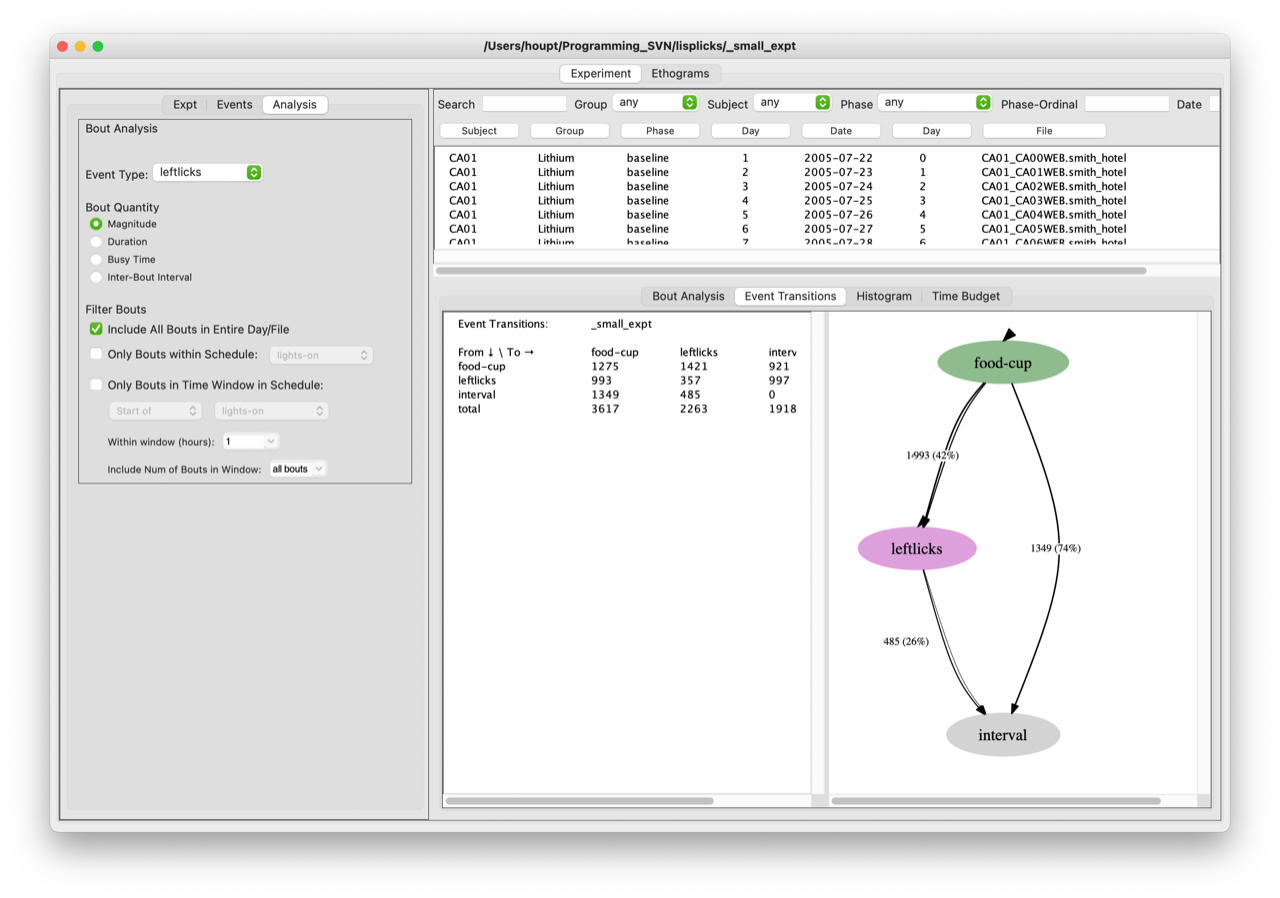In BoutTime, event data (individual Event Datums) are collected into Vectors of Events, and packaged with metadata as Event Records. The app provides multiple ways to represent and transform these time sequences, and to analyze and visualize them: actograms, ethograms, time budgets, etc. BoutTime allows for batch analysis of multiple consecutive data files (eg across multiple days) and multiple subjects in experimental groups.
BoutTime is written in Racket (a dialect of Scheme) to take advantage of the ease of defining hierarchical/decomposable data structures in Lisp, and the power of mapping of analysis functions to time-series. There is a detailed manual in progress describing the underlying functions.



Behavioral events are discrete extensions of action through time, so that they have a discrete start time, duration, and endtime (although near-instantaneous events may have a duration indistinguiable from zero). Examples of event are a single lick, a discrete meal, a bodily movement such as a scratch, a burst of vocalization, or the lack of movement such as a rest period.
Events may also have a magnitude, depending on the type of behavior: a bout of licking consists of a certain magnitude (number) of licks, a meal may consist of a certain magnitude (grams) of food, a limb extension has a magnitude of distance traveled, or a magntiude of force exerted.
Furthermore, events are frequently hierarchical or decomposable, with the property that they are composed of subevents: a single liquid meal may be composed of 10 bouts of licking, with each bout containing between 100 to 1000 indiviudal licks, for example. Frequently the analysis of behavior requires reducing smaller units of events into larger units, eg. licks into meals.
Events are arranged in sequences across time, either as repetitions of the same event, or a sequence of varied event types interdigited and even co-extensive in time.
In BoutTime, event data (individual Event Datums) are collected into Vectors of Events, and packaged with metadata as Event Records. There are multiple ways to represent and transform these time sequences, and to analyze and visualize them.
© 2014-2025 T.A. Houpt. Last updated 2022-01-09.